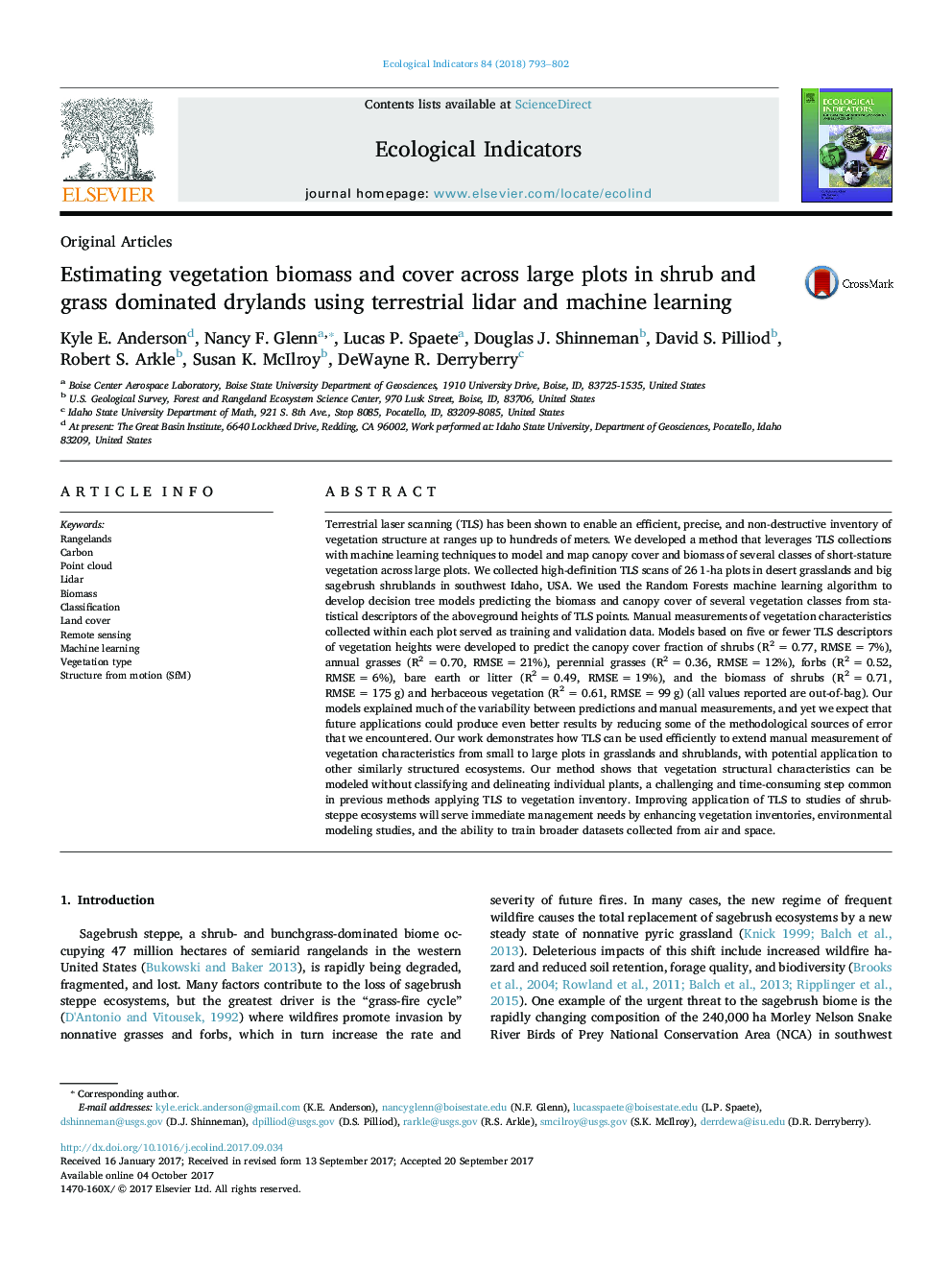| کد مقاله | کد نشریه | سال انتشار | مقاله انگلیسی | نسخه تمام متن |
|---|---|---|---|---|
| 5741598 | 1617118 | 2018 | 10 صفحه PDF | دانلود رایگان |
- Estimated canopy cover and biomass of vegetation across 1-ha plots.
- Decision tree models with Random Forests of height statistical descriptors.
- Models used maximum of five descriptors to predict canopy cover and biomass.
- 60% variance explained in shrub and annual grass cover and biomass.
- Our models did not require classifying and delineating individual plants.
Terrestrial laser scanning (TLS) has been shown to enable an efficient, precise, and non-destructive inventory of vegetation structure at ranges up to hundreds of meters. We developed a method that leverages TLS collections with machine learning techniques to model and map canopy cover and biomass of several classes of short-stature vegetation across large plots. We collected high-definition TLS scans of 26 1-ha plots in desert grasslands and big sagebrush shrublands in southwest Idaho, USA. We used the Random Forests machine learning algorithm to develop decision tree models predicting the biomass and canopy cover of several vegetation classes from statistical descriptors of the aboveground heights of TLS points. Manual measurements of vegetation characteristics collected within each plot served as training and validation data. Models based on five or fewer TLS descriptors of vegetation heights were developed to predict the canopy cover fraction of shrubs (R2Â =Â 0.77, RMSEÂ =Â 7%), annual grasses (R2Â =Â 0.70, RMSEÂ =Â 21%), perennial grasses (R2Â =Â 0.36, RMSEÂ =Â 12%), forbs (R2Â =Â 0.52, RMSEÂ =Â 6%), bare earth or litter (R2Â =Â 0.49, RMSEÂ =Â 19%), and the biomass of shrubs (R2Â =Â 0.71, RMSEÂ =Â 175Â g) and herbaceous vegetation (R2Â =Â 0.61, RMSEÂ =Â 99Â g) (all values reported are out-of-bag). Our models explained much of the variability between predictions and manual measurements, and yet we expect that future applications could produce even better results by reducing some of the methodological sources of error that we encountered. Our work demonstrates how TLS can be used efficiently to extend manual measurement of vegetation characteristics from small to large plots in grasslands and shrublands, with potential application to other similarly structured ecosystems. Our method shows that vegetation structural characteristics can be modeled without classifying and delineating individual plants, a challenging and time-consuming step common in previous methods applying TLS to vegetation inventory. Improving application of TLS to studies of shrub-steppe ecosystems will serve immediate management needs by enhancing vegetation inventories, environmental modeling studies, and the ability to train broader datasets collected from air and space.
Journal: Ecological Indicators - Volume 84, January 2018, Pages 793-802
